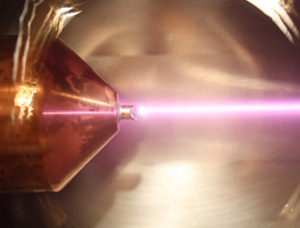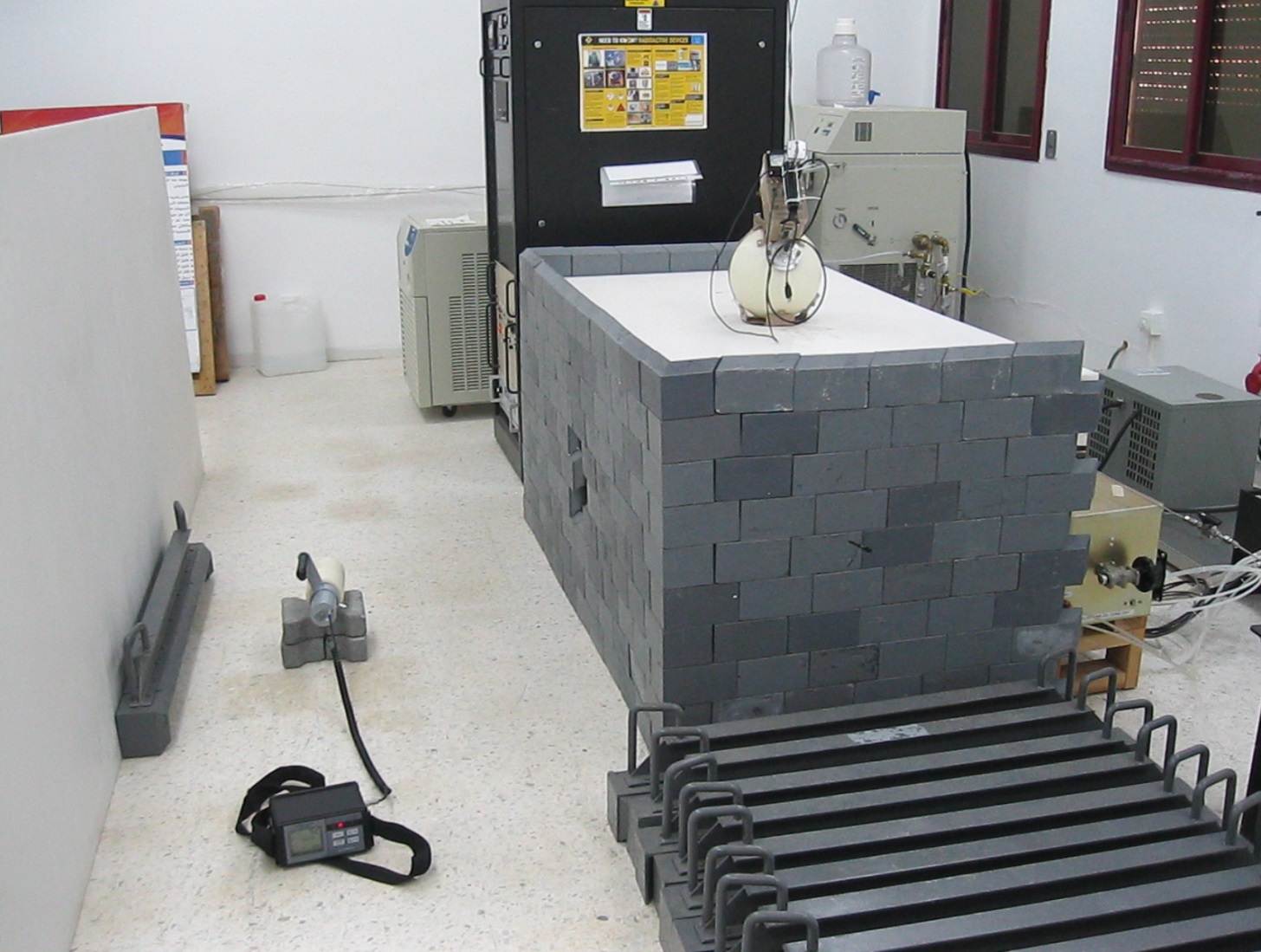Product: D-T Associated Particle Imaging Neutron Generator
Models: DT107.1-API, DT108.3-API, DT108.1-API
Please Note: A higher yield API neutron generator could easily be built if there was need. The gamma ray detector (not provided by Adelphi) throughput is typically the bottleneck dictating the maximum useful yield of this system.
| Generator type | Type and model number(s) | Specifications |
|---|---|---|
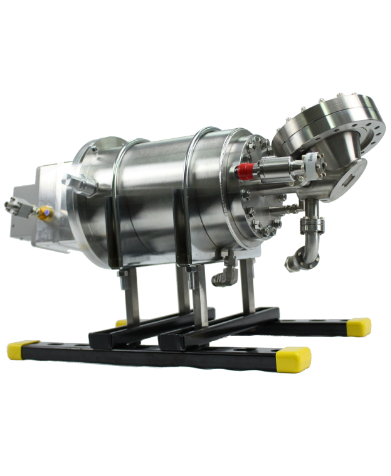
|
D-T, surface
target,
sealed, API
|
|
Overview of the D-T API generator
This generator is a variant of our DT110 series of neutron generator, tailored to Associated Particle Imaging (API) applications. The target is positioned on the exterior surface of the generator adjacent to a "window" that detects Associated Paricles from the fusion reaction that occurs on the target. This can be used for 2D, and potentially, 3D imaging. The Associated Paricles D-T reaction are are helium nuclei which are typically detected as a flash of light from a scintillator (typically YAP:Ce). This flash of light is typically detected via the use of a position sensitive Photo Multiplier Tube (PMT) or an array of silicon photomultipliers (SiPMs). The flash of light can then be correlated with a gamma ray detected from the scene and the assumption is made that the neutron that is associated with the particle that was detected is responsible for the detected gamma ray. This approach can lead to a 3D elemental composition map of an object. Adelphi sells the neutron generator complete with a scintillator and either sapphire window or fiber optic faceplate. Customers typically integrate these generators into the rest of their system, which includes the gamma ray and optical detectorsas as well as the signal processing equipment to correlate these neutrons.
An alternative name for this technique is the "tagged neutron" approach because each neutron leaving the generator within a certain solid angle (defined by the window diameter and target - window distance) is essentially time-stamped.
A key parameter for an API neuron generator is the neutron emission spot size, which dictates the resolution of the API system. We state the spot size, conservatively, as ⌀2.5 mm. Some images of the ion beam striking a target are shown in the images below. The target discolors where struck by the ion beam and the size of this spot may be measured, also, the bright pink glow from the beam can be measured in photographs. Neutron optics spot size measurements are, of course, also possible. Adelphi's older API designs have a different target (a large copper heat sink with a protruded target). More recent designs have the target located on the surface of the generator. The ion optics used in both designs is the same. << /p>
Overview of Adelphi's Associated DT neutron generators
The API generator is a variant of DT generator. It is possible to operate these generators D-D.
All of Adelphi’s neutron generators operate using a microwave driven Electron Cyclotron Resonance (ECR) ion source. Ions produced in the ion source are accelerated towards a target. The ions implant into the target. Subsequent ions can collide with ions that have been embedded in the target. When accelerated by a sufficiently high voltage, these ions can undergo nuclear fusion, leading to several nuclear reactions. The two relevant reactions for Adelphi’s neutron generators are:
- D+D=He-3 + n (2.45 MeV)
- D+T=He-4 + n (14.1 MeV)
D denotes deuterium, T denotes Tritium, “He” indicates a helium nucleus either the isotopes He-3 or He-4, ndenotes a neutron and the energy of the neutron is stated in MeV. Generators that contain tritium produce neutrons with a higher energy than those that only contain deuterium gas. This leads to different penetrating power, imagingcontrast,and different activation of elements due to the difference in collision cross sections of elements (isotopes) as a function of energy.
The ions are produced in the ion chamber when the microwave source is energized. The RF source can be either pulsed or operated Continuous Wave (CW). Minimum pulse lengths of 50 microseconds have been achieved.
D-T generators produce the more penetrating 14.1 MeV neutrons and this class of generator is more suited to certain activation measurements and to certain Fast Neutron Radiography (FNR) applications. If the ultimate goal is to produce thermal neutrons, most customers prefer to use D-D generators, and either add a moderator to their generator on the exterior surface, or buy a dedicated thermal neutron generator that contains a moderator within the generator’s body. D-T generators could be used, but the distance over which the 14.1 MeV neutrons moderate is much larger than the lower energy 2.45 MeV neutrons from the D-D reaction.
Adelphi only offers sealed neutron generators that contain tritium because tritium is a radioactive gas and the tritium needs to b
e safely contained within the generator. In these generators the Deuterium-Tritium gas mixture is preloaded into the generator. Tritium has a half-life of 12.3 years so eventually the tritium will need to be replaced, even if the generator is not used. The generator head may be returned to Adelphi for reloading. This is a straightforward process with a turnaround of a few days.Adelphi’s D-T 110.2 product provides both a high yield (neutrons/second) and a high flux (neutrons/cm2/sec) so is particularly well suited to applications such as radiation damage testing.
In sealed generators the generators come with the gas reservoir pre-loaded into a Non-Evaporable Getter (NEG). It is important for D-T generators to be sealed because tritium is a radioactive gas. The gas is entirely contained within the sealed generator envelope. You will be able to tell that the generator contains tritium because the energy of the neutrons and the yield per milliamp of ion current are higher for D-T generators than D-D generators.
We offer D-D and D-T products that are sealed. In Adelphi’s sealed neutron generator designs, the target is typically placed on the surface of the neutron generators (grounded target). .
Images
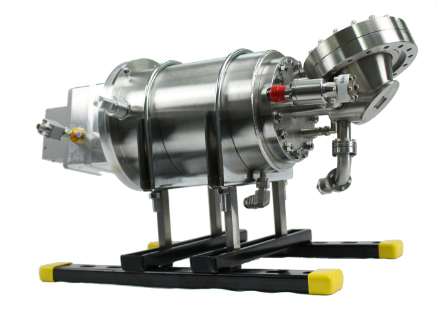
API
Associated Particle Imaging.
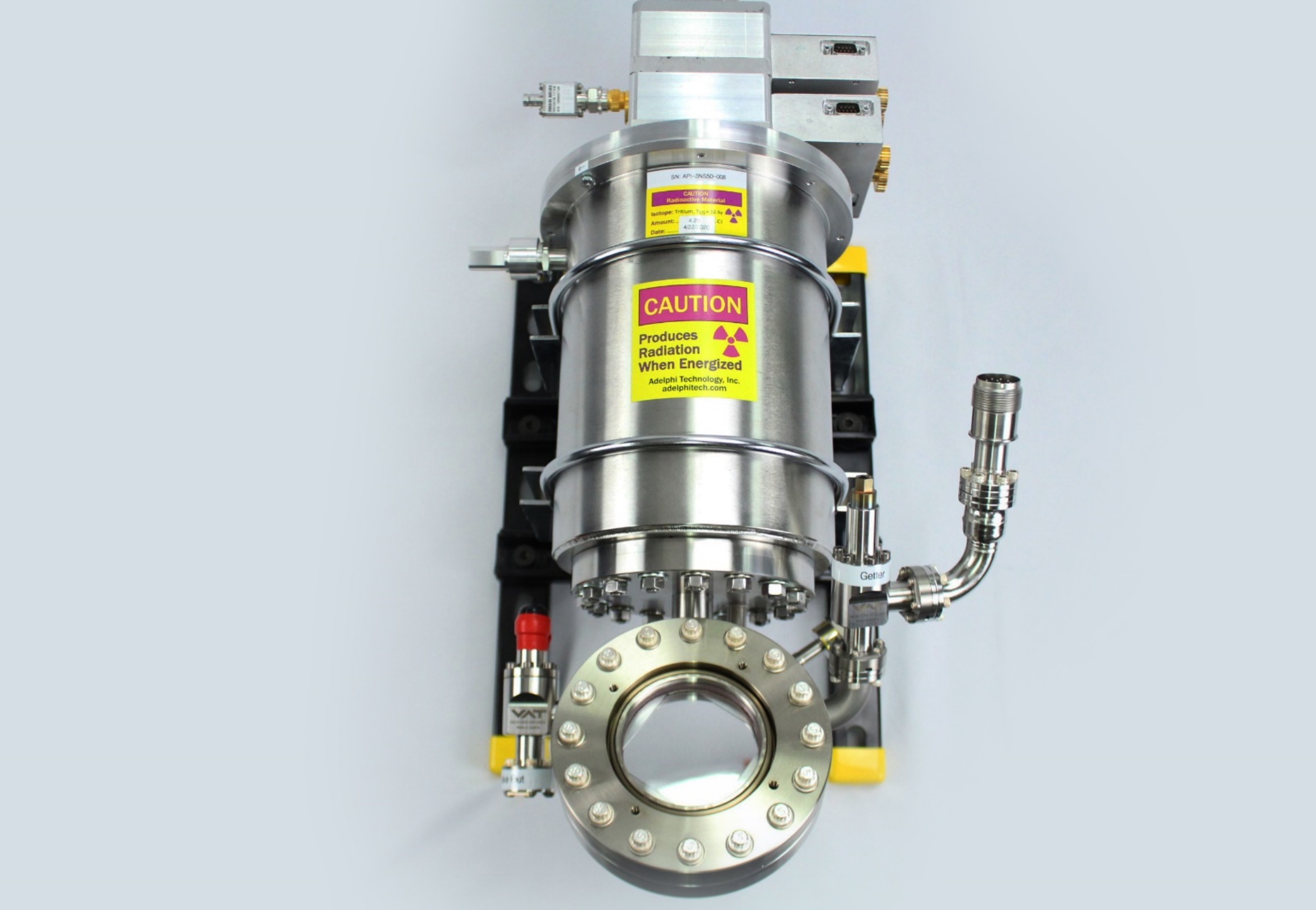
API
Associated Particle Imaging.
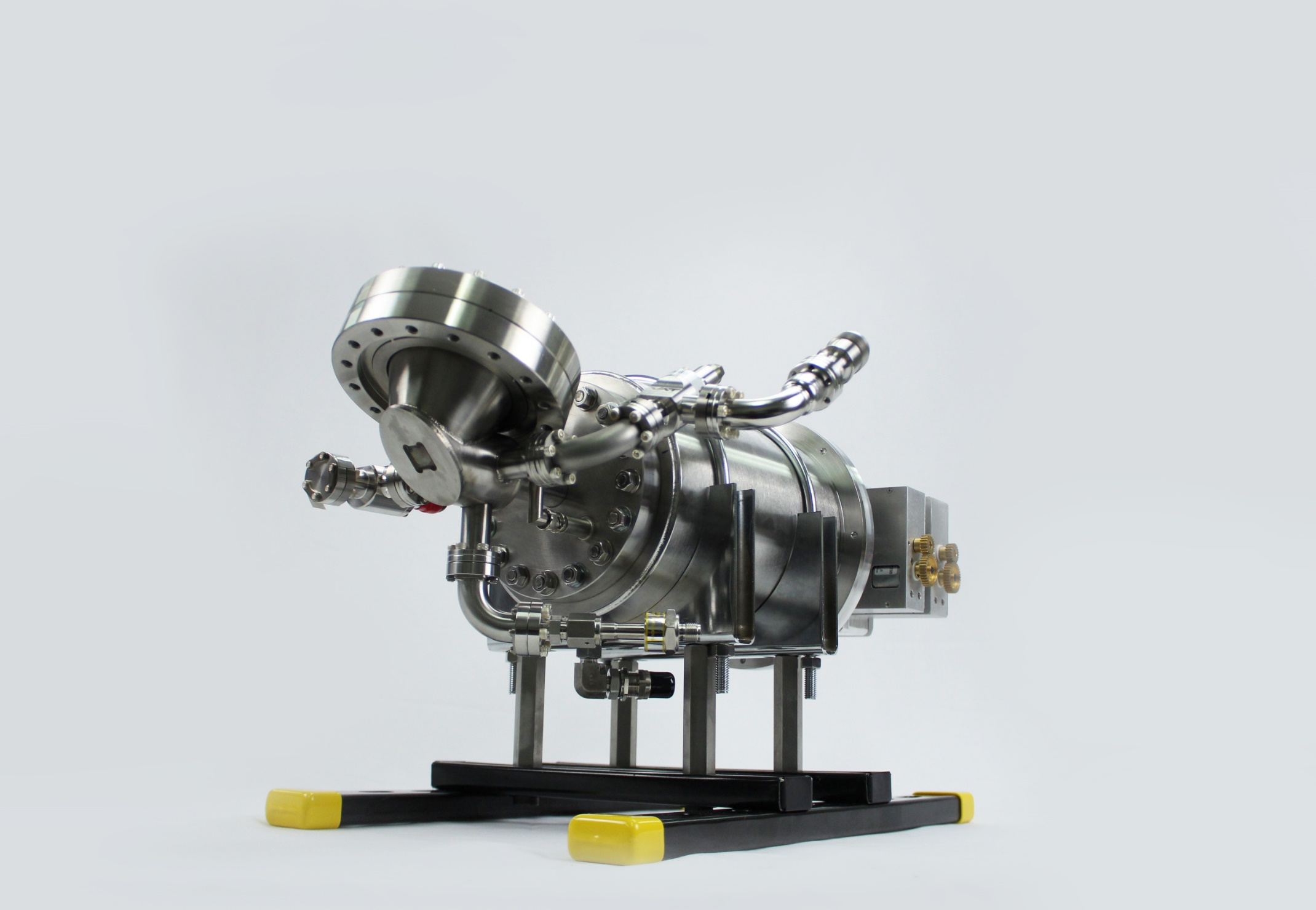
API
Associated Particle Imaging.
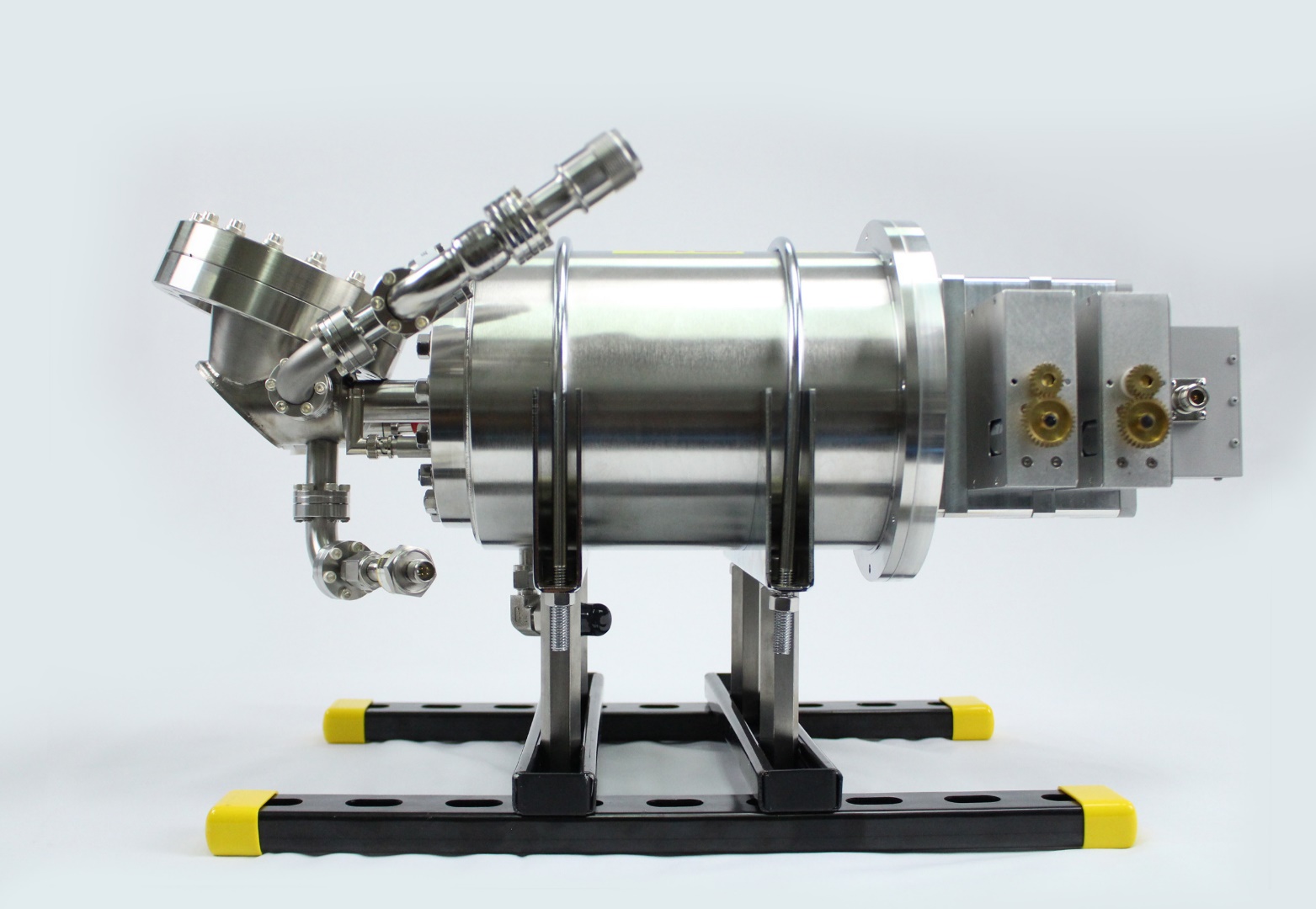
API
Associated Particle Imaging.
API
Associated Particle Imaging.
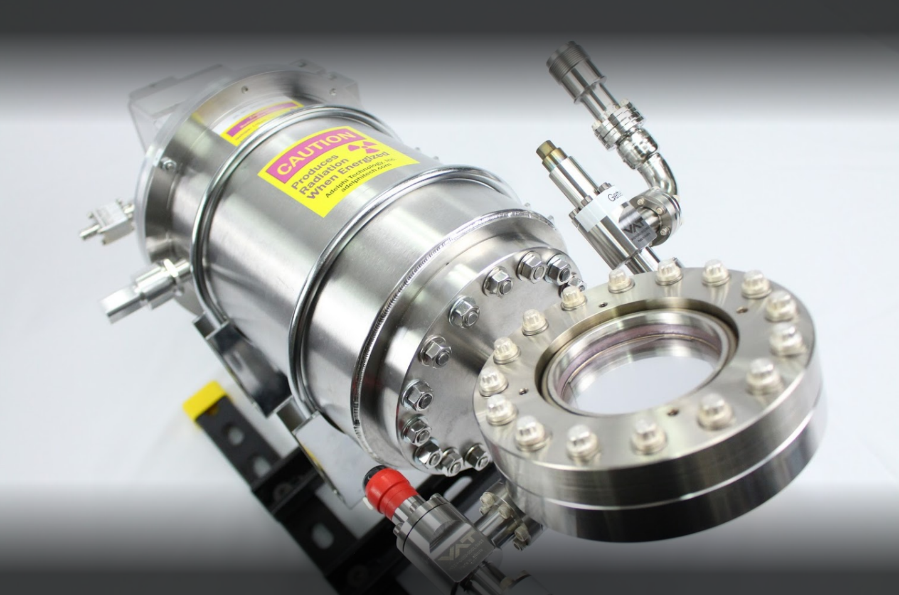
API
Associated Particle Imaging.
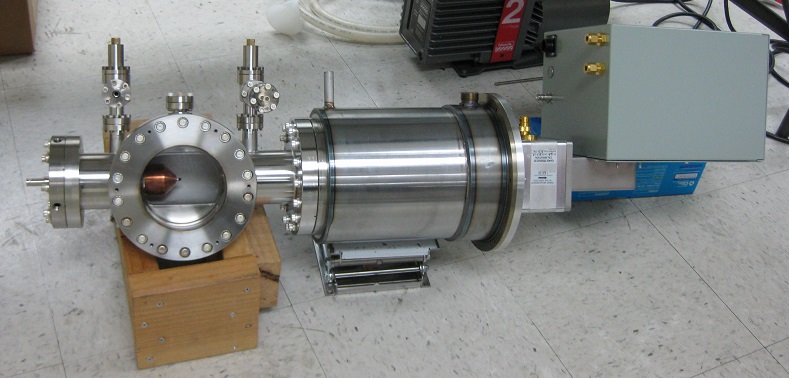
Old design
The target is not on the surface of the generator (this one dates to around 2015)

2014 design
This is probably our 3rd or 4th unit, and dates to around 2015
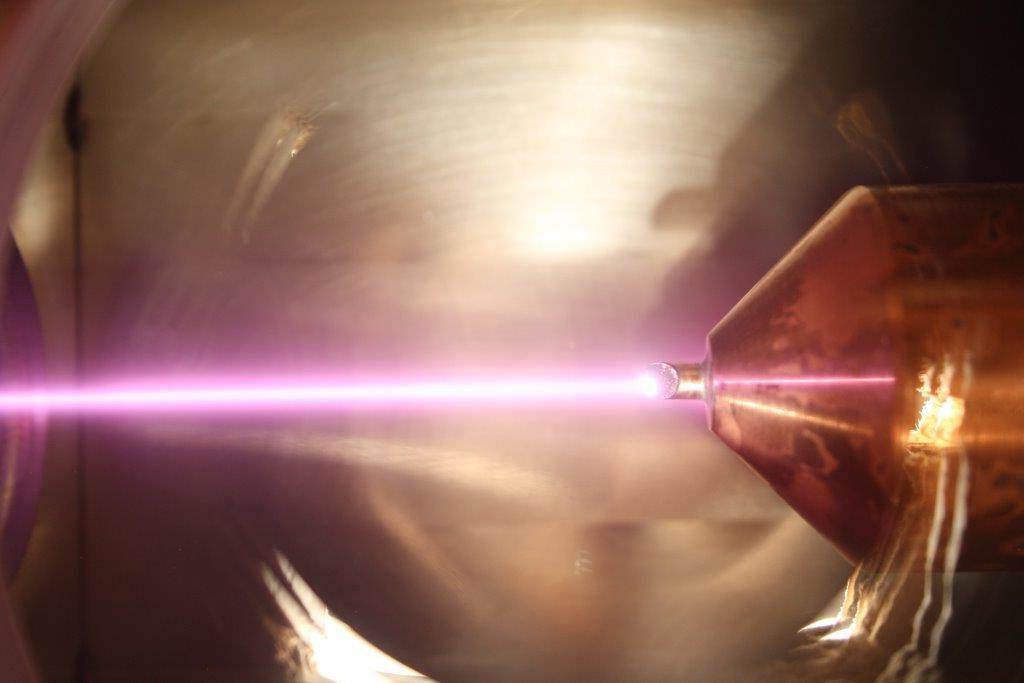
Old target
API spot size
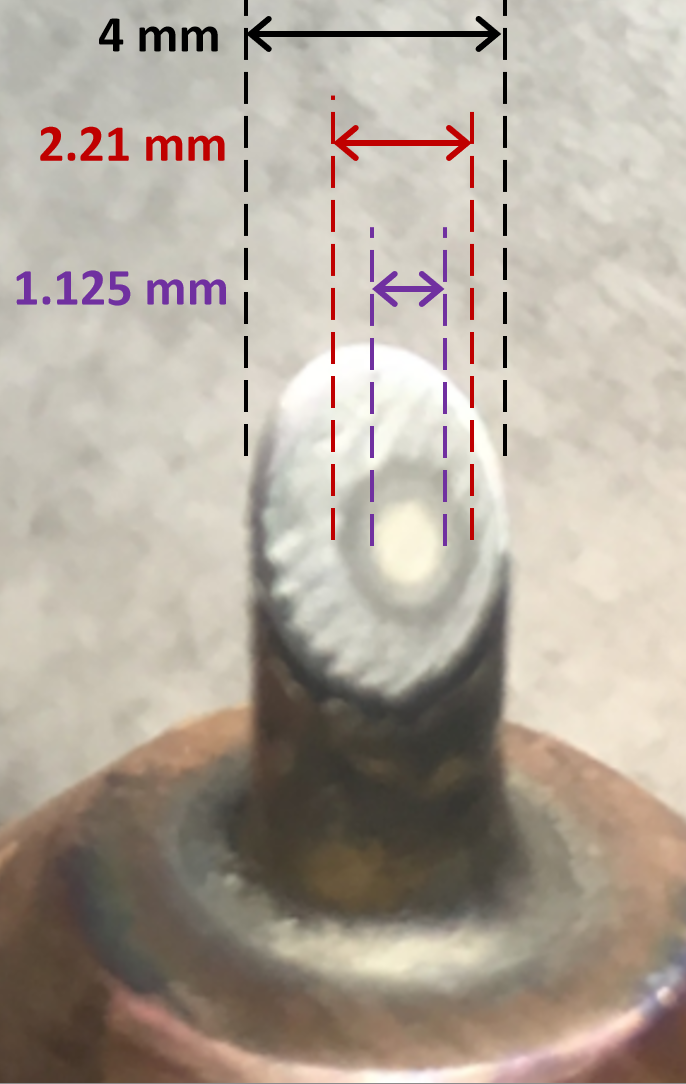
Old target
Spot size measurements
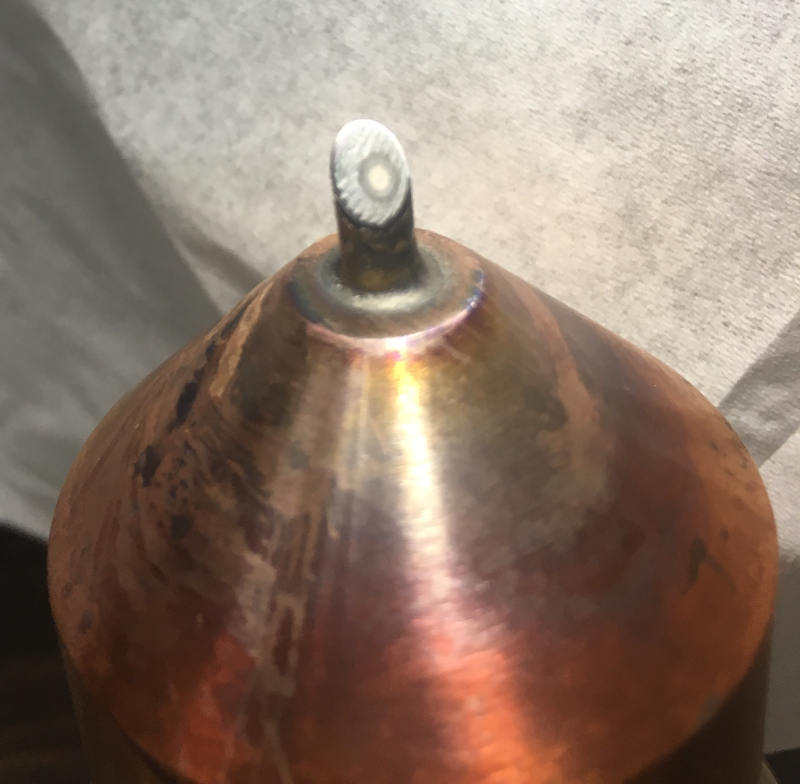
Old target
Target after use
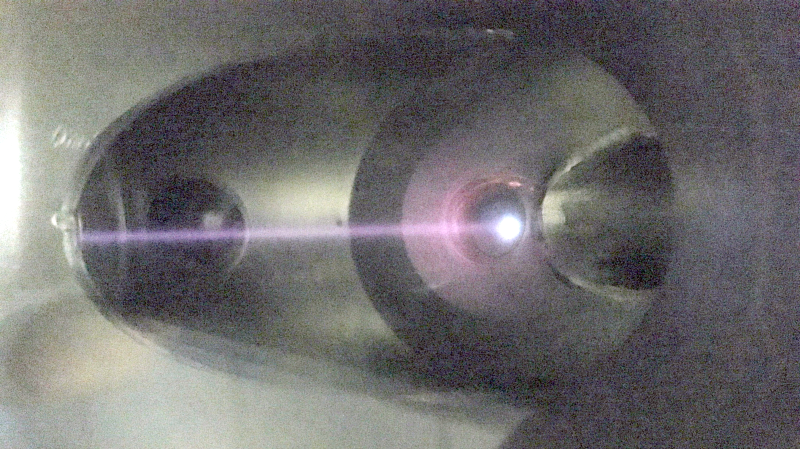
New target
Same ion-optics and same spot size
